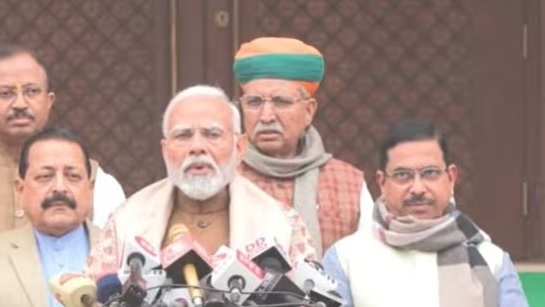
Sitharaman announces the establishment of three primary economic railway corridors aimed at alleviating congestion
The alleviation of congestion on heavily trafficked corridors will enhance the efficiency of passenger train operations, leading to improved safety and faster travel speeds for passengers.
On Thursday, Union Finance Minister Nirmala Sitharaman announced plans to establish three significant economic railway corridors to mitigate congestion and decrease logistics expenses across India.
Presenting the interim budget, Sitharaman stated that the three corridors, encompassing one for energy, mineral, and cement, another aimed at improving port connectivity, and a third focused on alleviating congestion in high-traffic areas, will be established.
She further mentioned that these projects have been selected under the PM Gati Shakti initiative to facilitate multimodal connectivity.

“These initiatives will enhance logistics effectiveness and lower expenses,” the finance minister affirmed.
Additionally, the alleviation of congestion in heavily trafficked corridors will enhance passenger train operations, leading to increased safety and faster travel for passengers.
“Alongside dedicated freight corridors, these three economic corridor initiatives will propel GDP growth and diminish logistic expenses,” Sitharaman emphasized.
“Additionally, 40,000 standard rail bogies will undergo conversion to meet Vande Bharat standards, aiming to enhance passengers’ safety, convenience, and comfort,” she added.
Presently, the Vande Bharat service encompasses 82 services across the network.
To further prioritize passenger comfort, the government intends to introduce sleeper Vande Bharat trains.
Manufactured at the Integral Coach Factory, Chennai, these trains are anticipated to commence operations by the end of next year.
Addressing the Metro and NaMo Bharat trains, Sitharaman remarked, “With a burgeoning middle class and rapid urbanization, Metro rail and NaMo Bharat can serve as catalysts for essential urban transformation. The expansion of these systems will be bolstered in major cities, focusing on transit-oriented development.”



